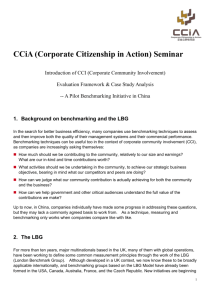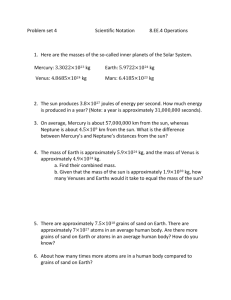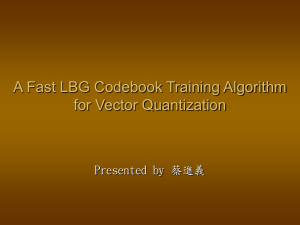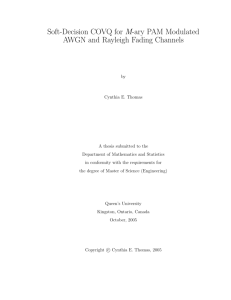A Fast Linde-Buzo-Gray Algorithm in Image Vector Quantization
advertisement
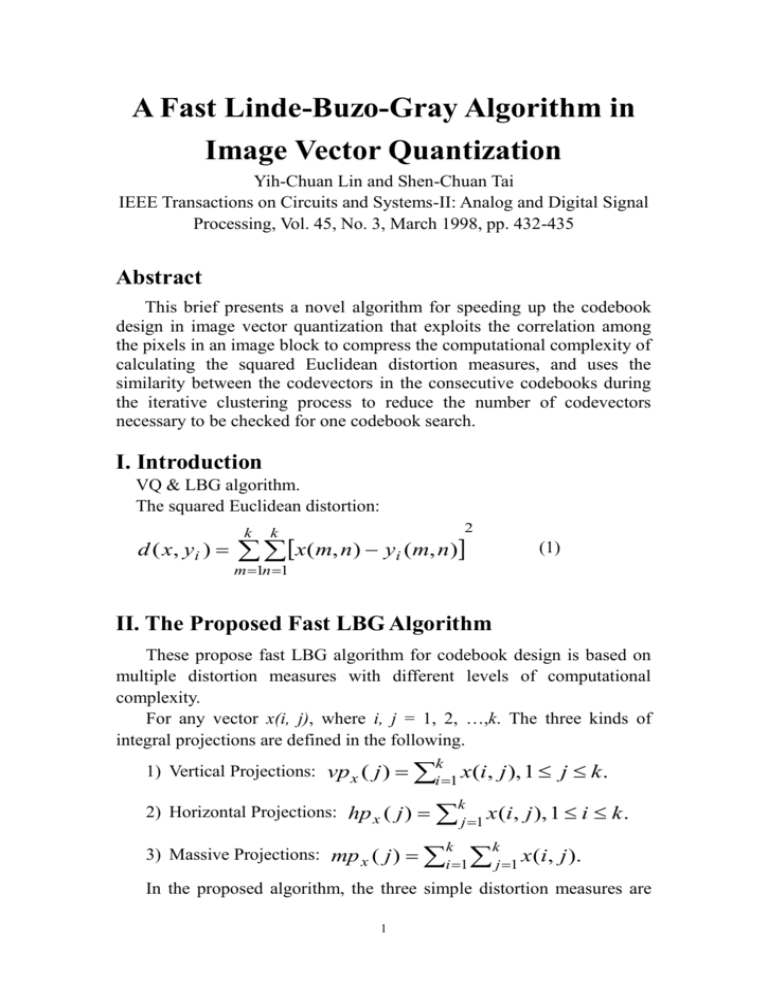
A Fast Linde-Buzo-Gray Algorithm in Image Vector Quantization Yih-Chuan Lin and Shen-Chuan Tai IEEE Transactions on Circuits and Systems-II: Analog and Digital Signal Processing, Vol. 45, No. 3, March 1998, pp. 432-435 Abstract This brief presents a novel algorithm for speeding up the codebook design in image vector quantization that exploits the correlation among the pixels in an image block to compress the computational complexity of calculating the squared Euclidean distortion measures, and uses the similarity between the codevectors in the consecutive codebooks during the iterative clustering process to reduce the number of codevectors necessary to be checked for one codebook search. I. Introduction VQ & LBG algorithm. The squared Euclidean distortion: d ( x , yi ) k 2 k x(m, n) yi (m, n) (1) m 1n 1 II. The Proposed Fast LBG Algorithm These propose fast LBG algorithm for codebook design is based on multiple distortion measures with different levels of computational complexity. For any vector x(i, j), where i, j = 1, 2, …,k. The three kinds of integral projections are defined in the following. 1) Vertical Projections: vp x ( j ) x(i, j ), 1 j k . i 1 k 2) Horizontal Projections: hp x ( j ) 3) Massive Projections: mp x ( j ) j 1 x (i, j ), 1 i k . k i 1 j 1 x (i, j ). k k In the proposed algorithm, the three simple distortion measures are 1 defined as follows: dm( x, yi ) ( mp x mp yi ) 2 k (2) [vp x (l ) vp yi (l )]2 (3) d h ( x, yi ) [hp x (l ) hp yi (l )]2 (4) d v ( x , yi ) l 1 k l 1 With these distortion measures defined in (1)-(4), we have the following three inequalities which can be easily proven for every codevector: dm(x, yi) k2d(x, yi) (5) dv(x, yi) kd(x, yi) (6) dh(x, yi) kd(x, yi) (7) When checking other codevectors yj, if any of the following test conditions is satisfied: i) k2dmin < dm(x, yj) ii) kdmin < dv(x, yj) iii) kdmin < dv(x, yj) then by inequalities (5), (6), or (7), the codevector yi can be rejected without calculating the squared Euclidean distortion because dmin <d(x, yj) can be induced in this situation. To increase the search efficiency during each iteration in the proposed fast LBG algorithm, codevectors in the current codebook should first be sorted in an ascending order of their massive projection. III. Experimental Results and Discussions Images Lenna F16 Peppers X-head 64 73 145 112 109 Fast LBG LBG 128 256 512 1024 64 128 256 512 1024 87 174 295 406 1674 2680 5824 11510 15473 245 267 441 456 3178 6832 9077 17076 17132 104 166 264 337 2702 2978 5903 9974 11802 62 129 239 465 2307 1178 2930 6631 15514 64 31 117 46 27 Fast LBG LBG 128 256 512 1024 64 128 256 53 120 146 219 706 1345 4320 103 125 183 246 2507 2871 3813 111 73 104 155 1131 4313 2714 55 73 119 170 549 1475 2019 Images Lenna F16 Peppers X-head 2 512 5748 6114 3962 3595 1024 8627 9351 6510 5044 Images Lenna F16 Peppers X-head 64 35 68 60 49 No. of iterations 128 256 512 1024 30 32 31 21 74 49 45 23 33 32 27 16 13 16 18 21 Images Lenna F16 Peppers X-head Codebook size 64 128 256 512 1024 64 16 54 25 12 64 27.7 28.1 27.8 30.6 SNR (in dB) 128 256 512 1024 29.4 30.4 31.2 32 28.9 29.9 30.6 31.6 28.7 29.5 30.4 31.2 33.5 34.2 35.1 36 No. of iterations SNR (in dB) 128 256 512 1024 64 128 256 512 15 24 16 12 25.3 26.3 27.4 28.3 31 21 17 13 24.2 25 25.6 26.9 47 15 11 9 24.4 25.4 26.3 27.5 16 11 10 7 30.5 31.4 32.3 33.4 LBG algorithm 14886 29914 59803 92280 236378 Fast LBG algorithm 776 1193 2029 2853 6033 IV. Conclusions Created by: Lih-Ching Lin Date: July 24, 1998 3 PDSLBG algorithm 2768 5342 9627 13476 35173 1024 29.8 28.4 28.9 34.7 Splitting algorithm 837 1040 1225 1538 1748


